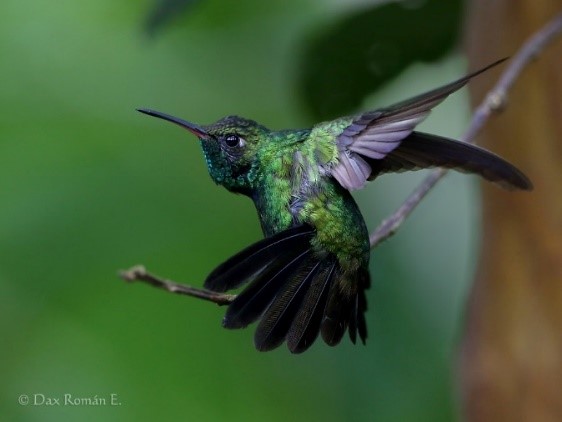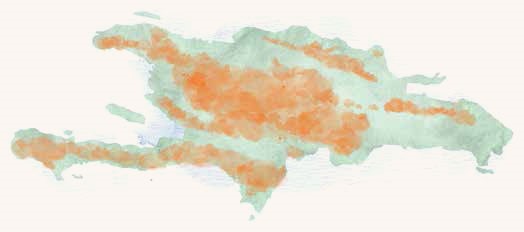Birdfinding.info ⇒ Common in mountain forests throughout Hispaniola. It can usually be found in numbers at upper elevations of Zapotén Road, Los Arroyos, and the mixed forest section of Alcoa Road. Other reliable sites include the Rabo de Gato Trail, Cachote, Ébano Verde, and Valle Nuevo National Park.
Hispaniolan Emerald
Chlorostilbon swainsonii
Endemic to Hispaniola, where it is widespread in highland forests, woodlands, and scrub. Spreads locally into lowlands during winter.
Identification
Male is a thin, deep-green hummingbird with a forked tail and a small white post-ocular spot. In good light, it shows some golden and coppery iridescence.
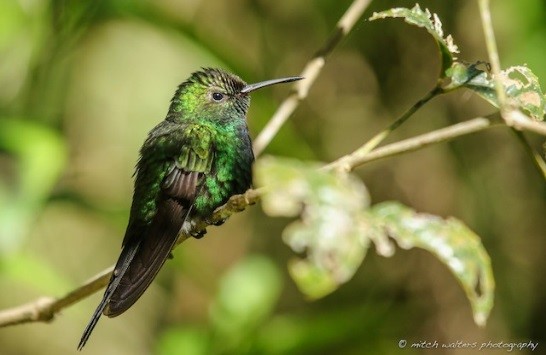
Hispaniolan Emerald, male. (Zapotén, Dominican Republic; March 9, 2017.) © Mitch Walters
The bill is slightly decurved, black above, and mostly red or reddish underneath.
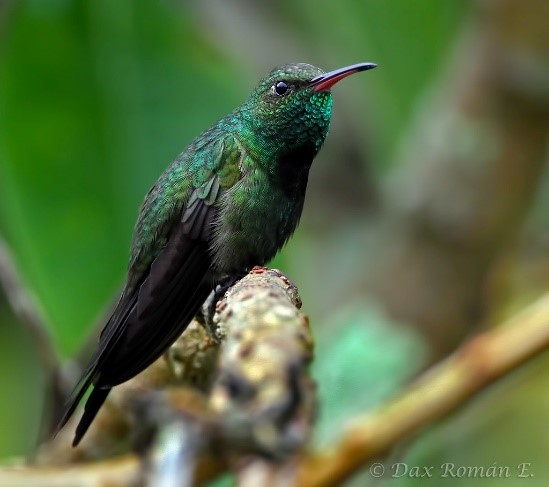
Hispaniolan Emerald, male showing bill mostly red underneath—also note glowing emerald chin. (Ébano Verde Scientific Reserve, Dominican Republic; November 16, 2012.) © Dax M. Román E.
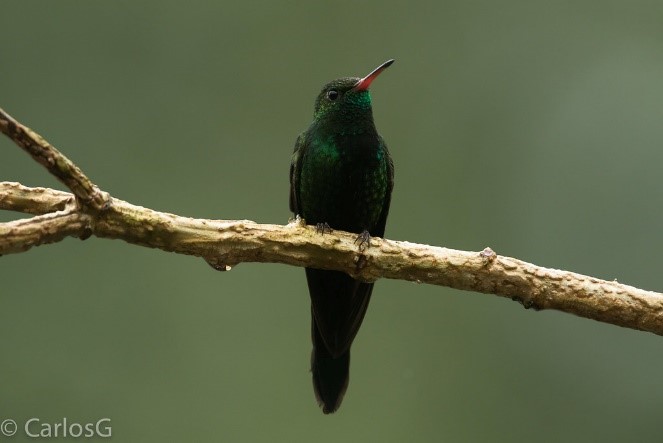
Hispaniolan Emerald, male showing mostly red bill and emerald chin. (Dominican Republic.) © Carlos Gomez
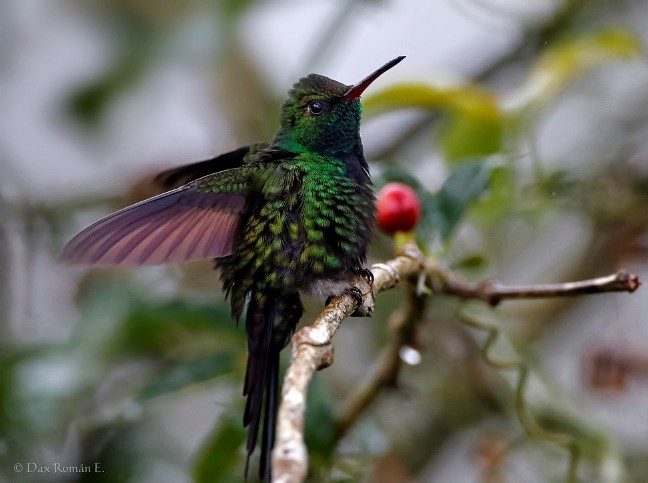
Hispaniolan Emerald, male. (Ébano Verde Scientific Reserve, Dominican Republic; January 28, 2015.) © Dax M. Román E.
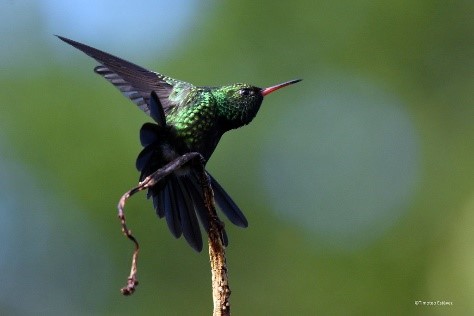
Hispaniolan Emerald, male showing mostly red bill in side view. (Dominican Republic; December 28, 2016.) © Timoteo Estévez
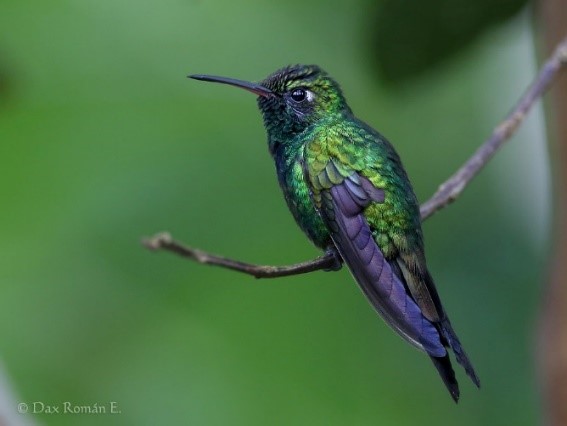
Hispaniolan Emerald, male. (Ébano Verde Scientific Reserve, Dominican Republic; September 28, 2013.) © Dax M. Román E.
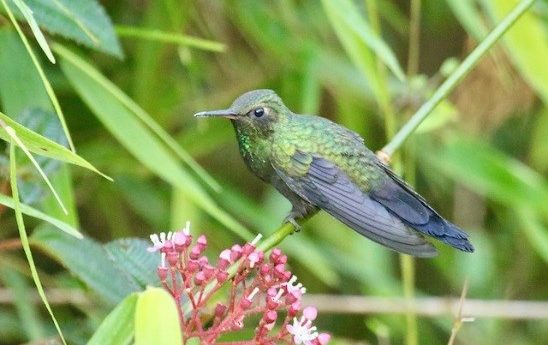
Hispaniolan Emerald, male. (Los Arroyos, Dominican Republic; February 7, 2018.) © Gil Ewing
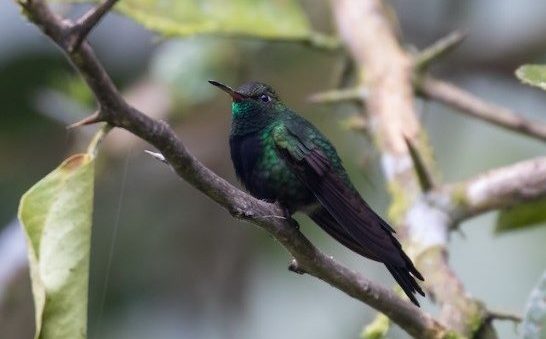
Hispaniolan Emerald, male showing bill mostly red underneath—also note glowing emerald chin. (Zapotén, Dominican Republic; April 4, 2017.) © Robert Lewis
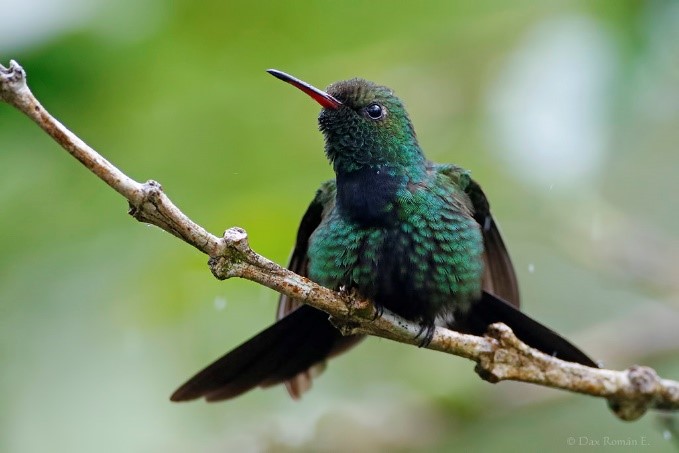
Hispaniolan Emerald, male with tail spread, showing depth of fork. (Ébano Verde Scientific Reserve, Dominican Republic; January 28, 2015.) © Dax M. Román E.
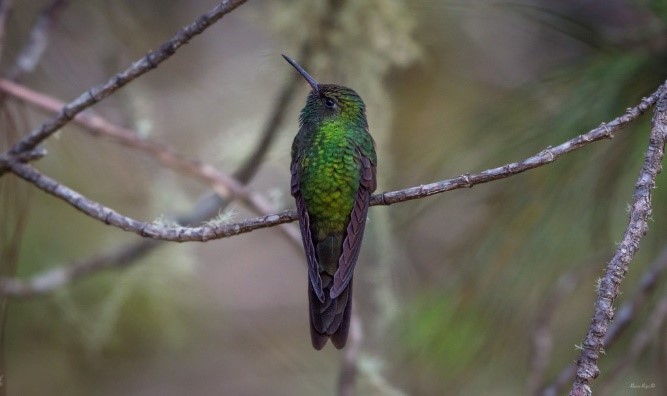
Hispaniolan Emerald, male, dorsal view. (Valle Nuevo National Park, Dominican Republic; January 28, 2017.) © Alberto Rojas
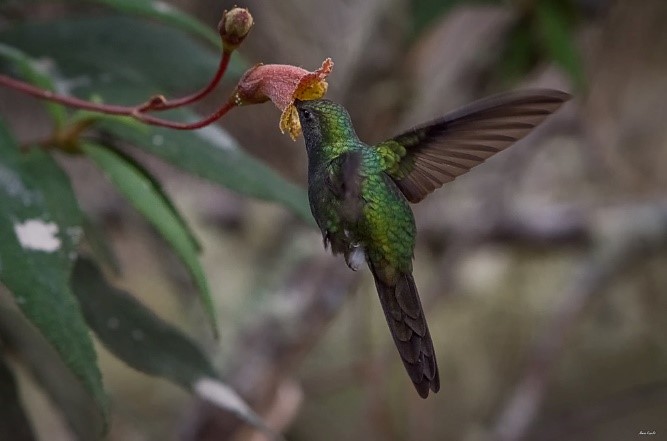
Hispaniolan Emerald, male, dorsal view. (Valle Nuevo National Park, Dominican Republic; January 28, 2017.) © Alberto Rojas
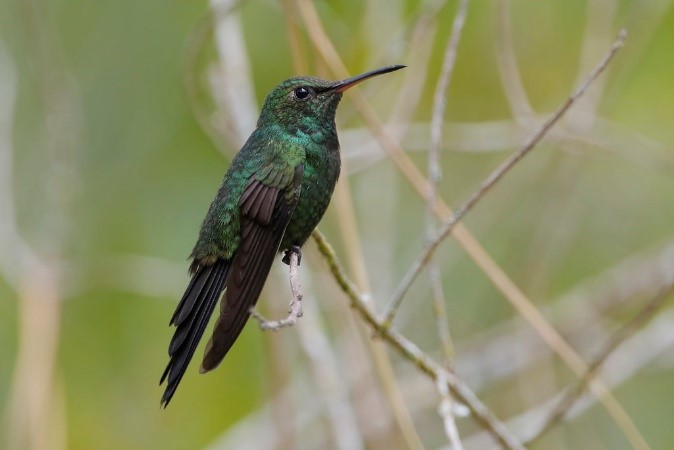
Hispaniolan Emerald, male. (Ébano Verde Scientific Reserve, Dominican Republic; January 28, 2015.) © Dax M. Román E.
Female has mostly green upperparts, an all-dark, notched tail, dingy whitish or grayish underparts, a dark cheek-stripe, and a pale post-ocular streak or spot.
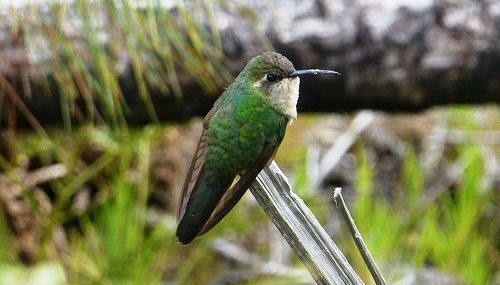
Hispaniolan Emerald, female. (Armando Bermúdez National Park, Dominican Republic; February 17, 2013.) © Peter LaBelle
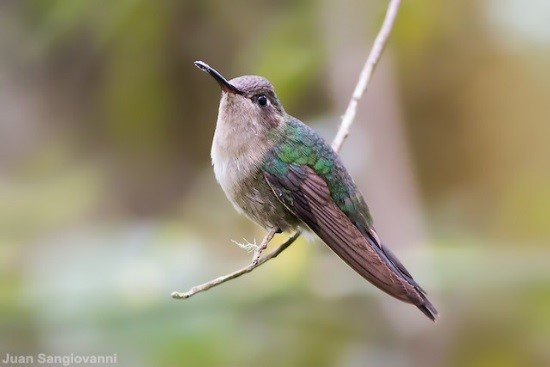
Hispaniolan Emerald, female. (Los Arroyos, Dominican Republic; March 12, 2016.) © Juan Sangiovanni
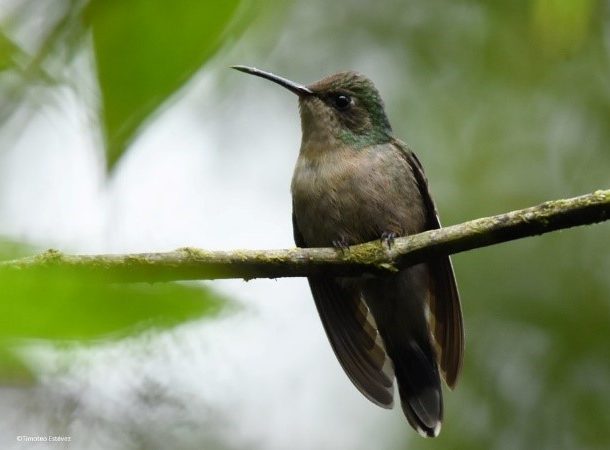
Hispaniolan Emerald, female. (Dominican Republic; December 20, 2015.) © Timoteo Estévez
Cf. Vervain Hummingbird. Vervain Hummingbird is smaller than Hispaniolan Emerald and both sexes lack the female emerald’s post-ocular streak. Male Vervain has a notched tail, like the female emerald, and usually has more green on the underparts.
Cf. Ruby-throated Hummingbird. A rare winter visitor to Hispaniola, female Ruby-throated Hummingbird is similar to female Hispaniolan Emerald. Ruby-throated is slightly larger, and has a longer bill, dots on the throat, and a squarer tail with white tips on the corners.
Notes
Monotypic species.
References
eBird. 2018. eBird: An online database of bird distribution and abundance. Cornell Lab of Ornithology, Ithaca, N.Y. http://www.ebird.org. (Accessed October 31, 2018.)
Fogden, M., M. Taylor, and S.L. Williamson. 2014. Hummingbirds: A Life-size Guide to Every Species. HarperCollins, New York.
Latta, S., C. Rimmer, A. Keith, J. Wiley, H. Raffaele, K. McFarland, and E. Fernandez. 2006. Birds of the Dominican Republic and Haiti. Princeton University Press, Princeton, N.J.
Raffaele, H., J. Wiley, O. Garrido, A. Keith, and J. Raffaele. 1998. A Guide to the Birds of the West Indies. Princeton University Press, Princeton, N.J.
